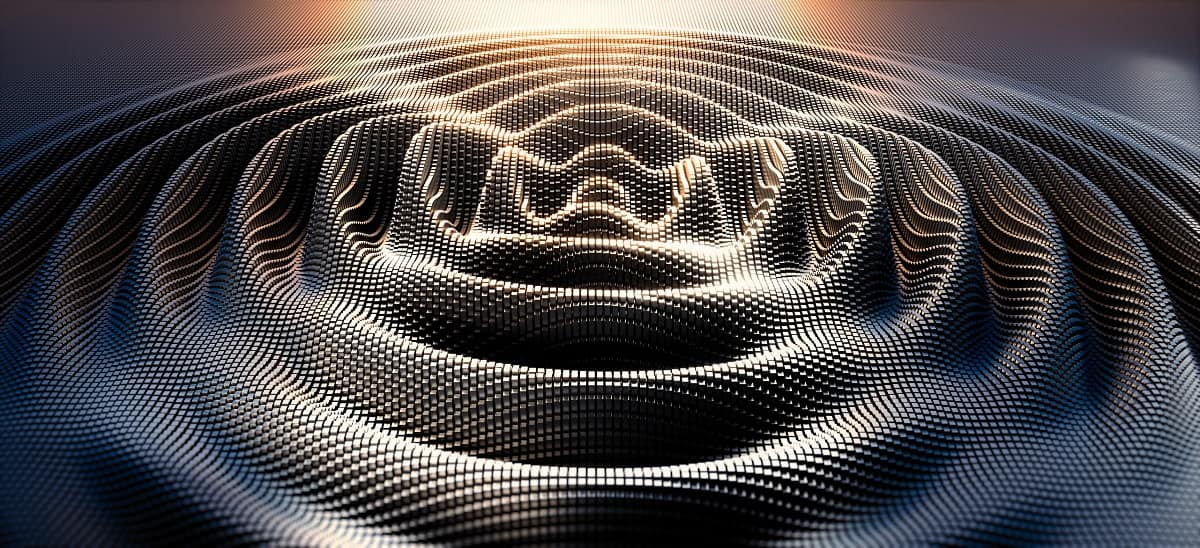Professor Helps Trace Gravitational Waves Back in Time

In 2015, researchers detected gravitational waves that had been produced 1.3 billion years ago, when two black holes orbiting around each other faster and faster merged into one, sending energy in the form of the waves flowing across the universe. The discovery confirmed Einstein’s prediction that the waves existed, and the scientists who led the research won the Nobel Prize in physics.
Now, researchers want to detect gravitational waves that come from further out in the universe, from further back in time, perhaps even from when the universe was created.
To do that, they need better, more sensitive instruments — better even than the interferometers used in 2015 that, with 2.6-miles-long arms and high-precision mirrors and lasers, have accuracy said to be equivalent to measuring the distance to the nearest star (about 4.2 light years away) to within the width of a human hair.
Dr. Andri Gretarsson, Embry-Riddle Aeronautical University associate professor of Physics, who has been involved in the search for gravitational waves since 1996, recently won a $143,000 grant from the National Science Foundation (NSF) to experiment with extremely specialized materials to help develop a new generation of interferometers with expanded capabilities.
“You can actually listen to the universe, but we would love to detect more. We would love to hear better,” said Gretarsson.
Gretarsson, who worked on the first device at the Laser Interferometer Gravitational-Wave Observatory (LIGO) and did his graduate research on the upgrade to that device, is researching the optical coatings used to make the mirrors that form the heart of the interferometers. Inside these observatories, laser light bounces back and forth between mirrors hung at either ends of the long arms. If a gravitational wave passes by the detector, it changes the distance between the mirrors by a tiny amount, reflecting a deformation of space-time. The tiny change — about one ten-thousandth the diameter of a proton — is the signal that a wave has passed.
Gretarsson described the quality of the mirrors by describing the clear, singing ping of a crystal wine glass versus the dull bonk of a wine glass that is not crystal. The mirror blanks are made of the highest-purity fused silica glass and, of all glass types, ring with the purest note. Unfortunately, the optical coatings needed to make them into reflective mirrors will dull that clear, singing ring unless new coatings can be found. The most promising coatings so far, Gretarsson said, are made of Aluminum-Gallium-Arsenide, which is grown as a single crystal.
The better the mirrors ring, the more precisely they reflect the lasers that bounce back and forth inside the interferometers, providing the measurements that allow the detection of the gravitational waves. Frequencies other than the pure notes at which the mirrors resonate can be reduced, making the detector more sensitive.
“If we want to build a better gravitational wave interferometer, we have to reduce noise,” said Gretarsson.
The crystalline aluminum gallium arsenide coating that Gretarsson will be researching has been shown to reduce “coating thermal noise” by at least a factor of five, but it has yet to be used on surfaces as large as the LIGO mirrors, which need to be at least 30 centimeters across. Gretarsson’s work will investigate coatings of what he calls an intermediate size to see if their desirable properties are preserved.
Leveraging Experience to Develop Talent
Helping Gretarsson perform the measurements will be Embry-Riddle undergraduates who, in return, will gain hands-on experience and a fuller understanding of the research.
“We’re developing their talent while exposing them to research so they can go on to do even more exciting things,” said Gretarsson.
An outreach component of the NSF grant will bring together teams of at least one senior citizen and one or more high school students to work on building radio antennas. Gretarsson said the idea has already been test-driven on the Prescott Campus, where a retired Army engineer named Ray Fobes donated his time to help build a radio observatory. Gretarsson said Fobes and the students built antennas together.
If the cross-generational teams are successful at analyzing data received by their antennas, they will “graduate” to analyzing publicly cached gravitational wave data.
“I can only mentor so many people, but if I can get these retirees to take some of their skills and try something new, then they can involve many more young people than I could,” Gretarsson said. “I hope it motivates high school students to go to college and study science.”

 Michaela Jarvis
Michaela Jarvis